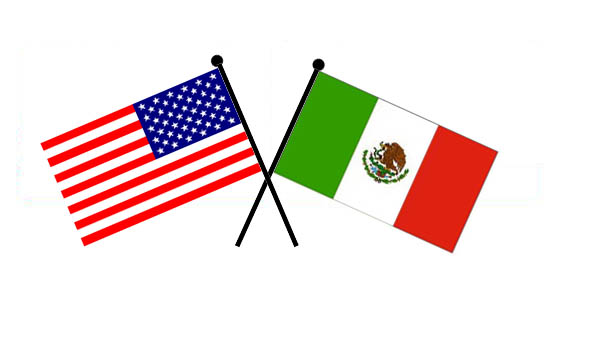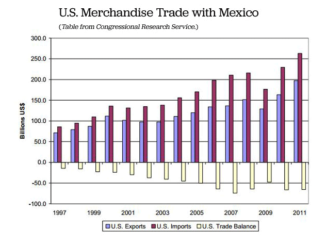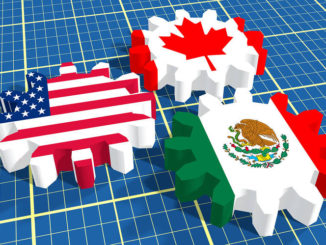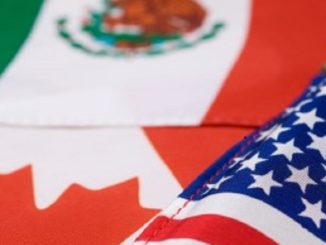
by Antonio Garza
When it comes to the future of U.S. foreign policy toward Mexico, or the bilateral relationship, the only thing that’s certain is profound uncertainty. During his campaigning, President-elect Donald Trump has made a series of grandiose (and largely unfeasible) proposals that would affect Mexico. Now with Election Day behind us, the big question is: What comes next?
History tells us that outsized campaign promises rarely translate into similarly proportioned policies. In the past weeks, we’ve seen some initial signs that Trump and those around him are already recalibrating on their biggest ticket proposals, and it wouldn’t be surprising to see this continue over the coming months. While shifts in Trump’s transition team’s tone and content won’t be a magic fix for repairing the damage that’s been done, it will be critically necessary for maintaining stable relations with one of the United States’ most important economic and security partners.
First and foremost, Trump’s transition team and administration will need to begin appreciating that their words carry serious consequences when backed by the power of the presidency. Mexican officials have repeatedly (and perhaps even masochistically) shown a preference for diplomacy over confrontation, despite strong internal pressure in the other direction. Mexico’s President Enrique Peña Nieto’s quick congratulations to Trump after his electoral victory and request for a bilateral meeting are olive branches from Los Pinos, but they don’t come from an unlimited giving tree. If negative rhetoric surrounding Mexico, Mexicans and Mexican-Americans continues over the coming weeks and months, it could frost or freeze these nascent diplomatic overtures.
On the economic side, the president-elect should quickly pivot toward supporting the elements that work and away from those that won’t achieve objectives. For example, slapping a 35 percent tariff on companies that open factories in Mexico won’t boost U.S. employment in the short- or medium-term and would likely do the very opposite. Tariffs would immediately increase costs for U.S. businesses, while adjusting production and operations would take months or even years. In the interlude, some businesses would likely downsize or shut down, meaning layoffs for American workers.
NAFTA could be a more positive story. If there is one thing that this president-elect appreciates, it is the need for flexibility at the negotiating table. Many analysts have written that the 22-year old agreement could stand to be updated, and leaders from both Canada and Mexico have already suggested their willingness to sit down and reopen NAFTA. If this is a real trilateral discussion, it could kill two birds with one stone: Create real benefits for the United States and fulfill a campaign promise.
On border security, Trump and his transition team have already begun to expand their definition of a “wall,” noting that some parts could be fencing. This is a positive start, since building the Great Wall of America is not only a waste of political capital, it is a waste of actual capital. The United States’ limited dollars would be much better spent on more cost effective tools for securing the border, such as motion sensors or radars.
Trump’s campaign statements and promises on immigration have instilled a deep fear among millions of Americans. In office, the Trump administration will represent the entire U.S. population and his first step should be sitting down with Hispanic and other immigrant groups to hear their concerns. Some policies won’t meet much pushback, such as deporting violent criminals. Yet others, such as rolling back temporary work visas for DREAMers, would be extremely disruptive to families, communities and workplaces. Affected groups deserve a space at any negotiating table during these difficult and complicated discussions.
On the other side of the border, Mexico will also have to respond to U.S. policy developments. Every country in the world will, and should, protect its own interests and Mexico is no different. Government officials will be looking to counter or mitigate any U.S. policies that would pose a threat to their citizenry or economy. But it is unlikely that Mexicans will adopt their elected officials’ pragmatic stance toward a Trump government anytime soon. This means that Mexicans could apply strong domestic pressure against any strategy that they perceive as being too accommodating, with the backlash feeding directly into Mexico’s own populist fires.
Not much will change until Trump’s transition team defines the general parameters for its approach toward Mexico. In the meantime, the current uncertainty will continue hurting cross-border companies that are adopting a “wait and see” (or “wait and pray”) strategy. Similarly, it will keep straining people-to-people relationships, as Mexican stereotypes in the United States become mainstreamed and Donald Trump’s support hovers around rock-bottom in Mexico.
These may seem to be separate issues from U.S.-Mexico bilateral relations, but the cross-border relationship is far more complex than any one president or policy. It will be shaped by the many disparate relationships between communities, between businesses and between policymakers. Adding a heavy dose of realism to Trump’s policies will be critical for resetting the tone, but it’s only the starting point for managing bilateral relations over the next four years.
Antonio Garza is a former U.S. ambassador to Mexico. He is counsel in the Mexico City office of White & Case and writes for The Monitor’s Board of Contributors. Contact him at tonygarza.com; or on Twitter @aogarza.



